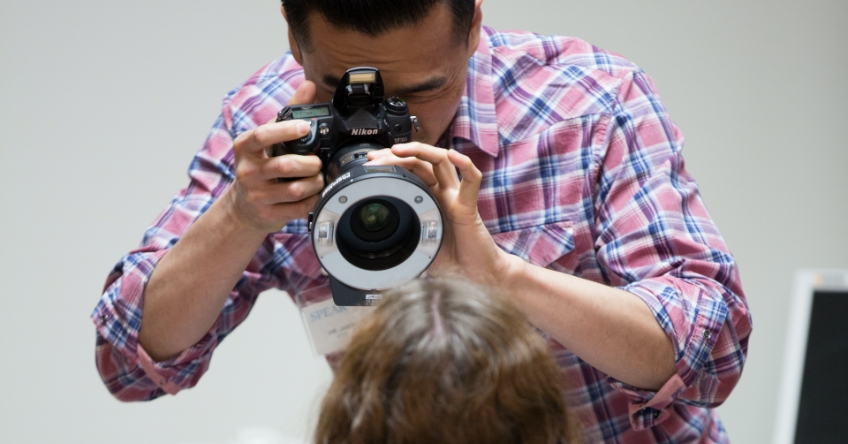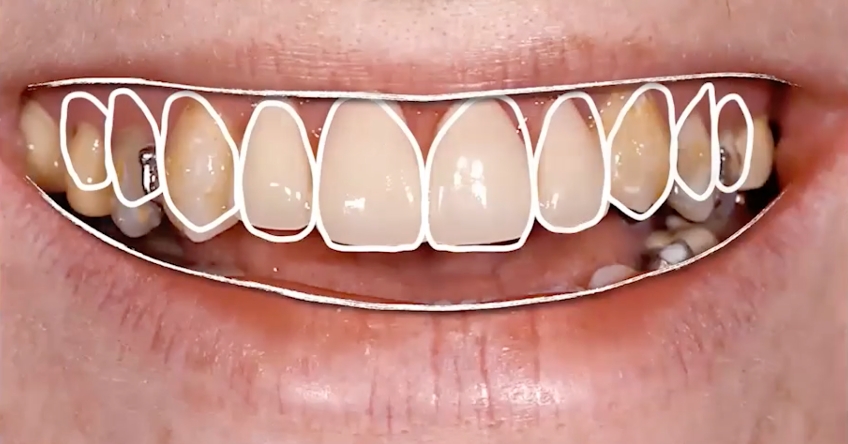Advanced FGTP: The Inclusion of Airway Prosthodontics

Facially Generated Treatment Planning (FGTP) was introduced by Dr. Frank Spear in 1985 and has become the premier strategy for planning and executing complex, comprehensive restorative dentistry. Before its introduction, the lower arch and occlusal strategies dictated patient care. The spherical and mechanical philosophies established the proper Curve of Spee and Wilson on semi or fully adjustable articulators. The esthetic parameters were secondary to function. Treatment planning was done on mounted casts.
Today, FGTP focuses on setting the teeth in the proper position as dictated by the face and smile. Its tenets come from removable prosthodontic principles developed in complete denture fabrication. First, establish the ideal incisal edge position for the maxillary central incisors.
Second, the proper tooth proportion should be determined to allow the lip to translate to the free gingival margin of the centrals.
Third, the remaining upper teeth should be set to harmonize with the centrals and lip. The visualization is done with templates on smile photographs (Fig. 1). This technique has worked magnificently for years. Still, it has a weakness in that it is a two-dimensional strategy. The templates allow alteration in a single vertical plane. Practitioners can imagine intruding or crown lengthening worn anterior teeth and restoring them to the new position. Yet, those of you who have used the templates in planning have noticed that most complex wear cases call for a three-dimensional change to deal with transverse and sagittal deficiencies. These are not accounted for in the traditional FGTP concept.

The Inclusion of Airway Prosthodontics
In 2016, airway prosthodontic dentistry was introduced to Spear Education. Initially, the excitement with its introduction focused on providing unique answers to difficult problems that we face in daily practice: bruxism, reflux, periodontal disease, malocclusion, etc. It also became personal for many people who suffer from or have family members impacted by airway dysfunction.
Finally, the Seattle Protocol gave us a chance to control these issues. Step 1 of the Protocol is 14 days of nasal breathing therapy. I have found that approximately 40% of my patients control their issues at Step 1.
The finish line of any treatment that we render for a dysfunctional airway should be nasal breathing. Mouth breathing for more than 10% of sleep is abnormal and the percentage during the day should be even less. A few important pieces of research were added to the literature at this time:
- Deviated septa resolved in children with expansion
- In adults and children, expansion increases nasal volume, improves tongue position out of the airway, and reduces nasal resistance in breathing
- Nasal surgery to repair deviations remain symptomatic more often in patients with a constricted maxilla
- MARPE and DOME were added to SARPE and LeForte to resolve maxillary hypoplasia. These options are significantly less invasive
- Adults with constriction of the maxilla in the premolar and molar region are at a significantly higher risk for apnea
The last research goes further to demonstrate that the lack of three-dimensional growth in the maxilla will collapse the palate and create base of tongue obstructions. With that in mind, the world of airway and FGTP advanced. Smile design is not limited to improving esthetics and function. Additionally, it can, in some cases, improve the patient’s health.

Today, airway has become part of what I refer to as advanced FGTP. Our cases need to start with an awareness of anatomic issues that could be related to airway dysfunction during growth and development and/or the changes that are currently creating more stressful breathing. While the templates are not currently 3D, dentists need to begin visualizing transverse and sagittal alterations in tooth and skeletal positions. The interesting thing we are finding is that when the teeth are placed in the most ideal position for esthetics and function, it is also a very healthy position for nasal breathing.
Conversely, if you treat from the foundation of health, the smile and bite work beautifully. I think that when people ask for the Hollywood Smile, they are really asking for the Heathy Smile. It is an exciting time to be a Spear trained dentist!
SPEAR campus
Hands-On Learning in Spear Workshops
With enhanced safety and sterilization measures in place, the Spear Campus is now reopened for hands-on clinical CE workshops. As you consider a trip to Scottsdale, please visit our campus page for more details, including information on instructors, CE curricula and dates that will work for your schedule.

By: Jeffrey Rouse
Date: January 10, 2022
Featured Digest articles
Insights and advice from Spear Faculty and industry experts


